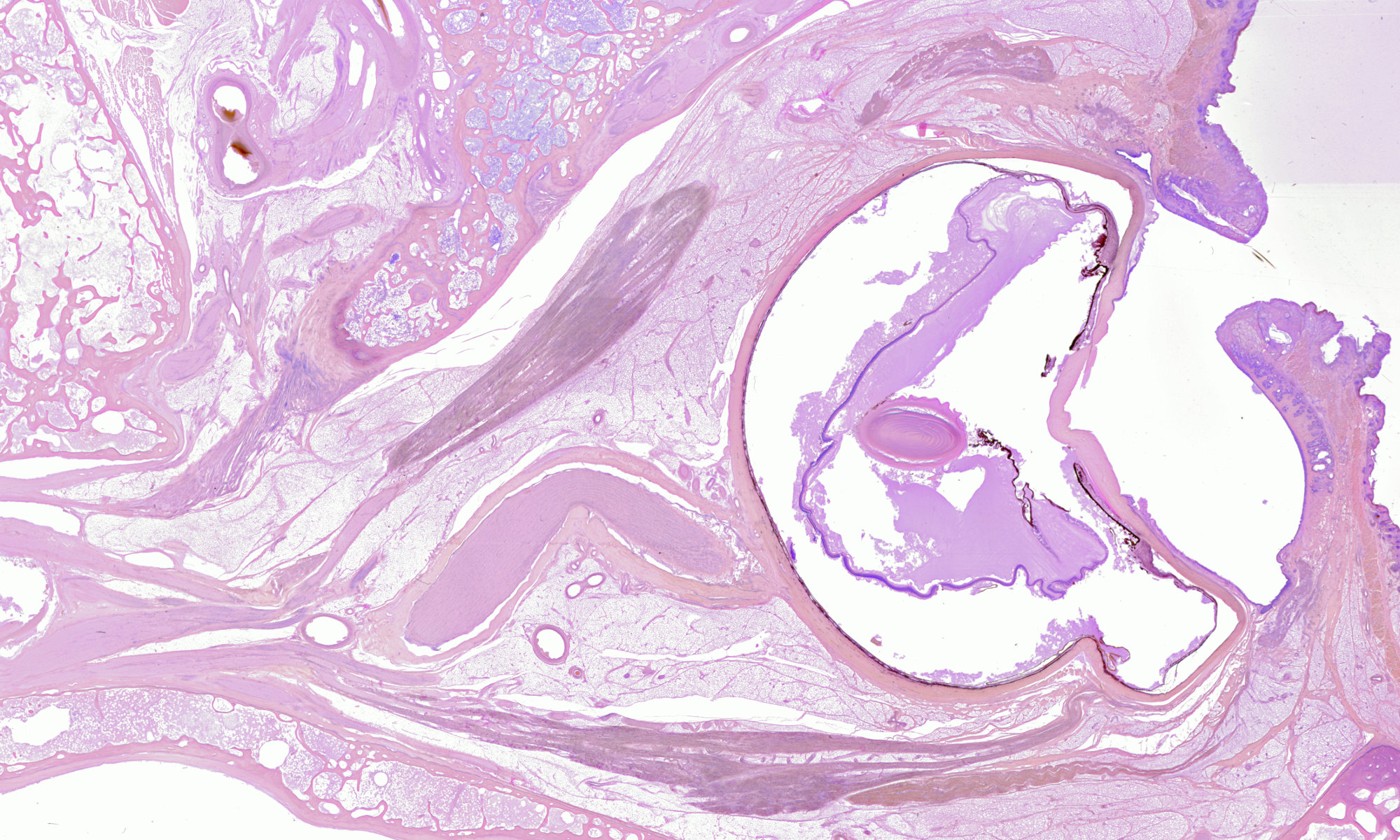This movie shows a reconstruction of part of a human embryo. The embryo is 13mm long, measured from crown to bottom (Carnegie stage 16, postovulatory age: between 5.5 and 6 weeks). Sections of 20 m thick were cut along the frontal plane and stained with haematoxylin-eosin. The reconstruction comprises sections #170 – #271. First, the original scans were downsampled to a resolution of 512×659 pixels. Secondly, the sections were segmented, i.e. the object of interest was separated from the background. Thirdly, the RGB image data was converted to scalar image data using principal component analysis. Finally, reconstruction was performed by registration of pairs of adjacent images using normalised correlation as similarity measure. The centre of gravity of the segmentation masks was used to estimate an initial transform.
A number of interesting features can be discerned in the movie, for instance the neural tube and the primordial eye in the orbit. These renderings should be interpreted with care, because they depend on the transfer function that was used, i.e. the mapping from data values to colour and transparency.
The reconstruction was done by Joris van Zwieten.
